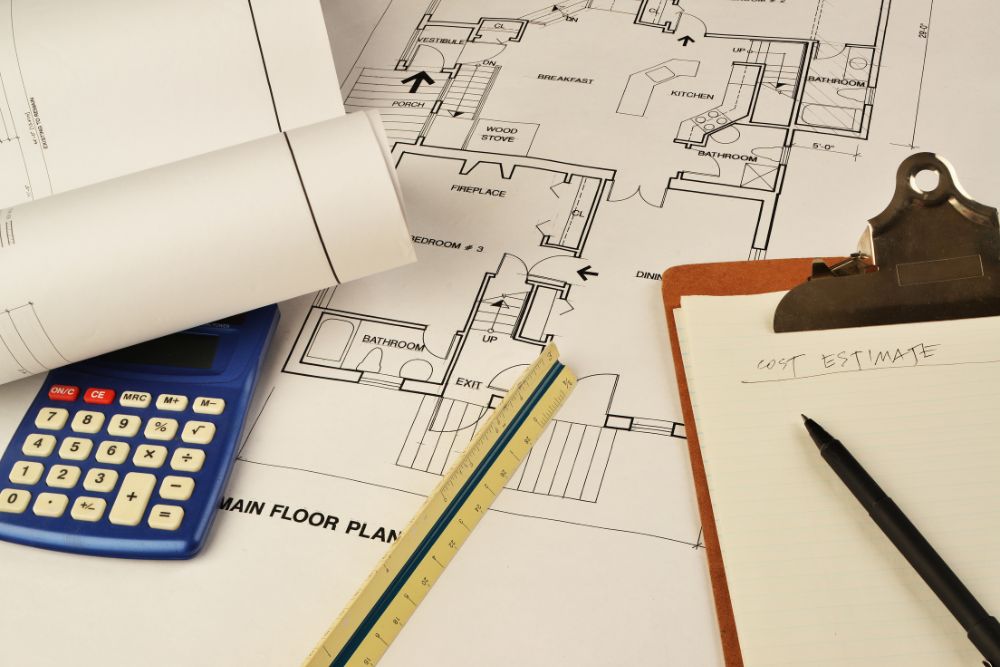Every successful construction project starts with knowing your true costs. Having an idea of what is labor burden in construction is an integral part of that. Many contractors focus only on hourly wages, but there’s more to it. Labor burden includes additional expenses, such as taxes, insurance, and employee benefits, that can add up quickly.
These hidden costs represent the actual amount a company spends on each worker, not just their paycheck. When you know your labor burden, you can make smarter financial decisions, create accurate estimates, and keep your projects profitable.
In this blog, we’ll explain what labor burden means, why it matters, how to calculate it, and how it can impact your overall project success.
What Is Labor Burden in Construction?
In construction, labor burden refers to the additional costs a company incurs for an employee beyond their regular wage. These costs include items such as insurance, payroll taxes, benefits, and paid time off. Together, they show the true cost of having an employee on the job.
Many construction companies overlook these costs when preparing estimates. As a result, they may underprice projects and ultimately lose money. On average, a company spends about 40% more than an employee’s base wage because of labor burden, and sometimes even more.
Knowing what is labor burden in construction helps contractors make accurate budgets, plan projects better, and protect their profits. It’s a simple but powerful step toward running a successful construction business.
Why Labor Burden Is Important in Construction
Running a construction project involves many costs, and labor is one of the biggest. But the worker’s wage isn’t the only expense. There are also additional costs, such as insurance, taxes, paid time off, and training, collectively referred to as the labor burden.
Understanding your labor burden is crucial to determining the true cost of your workers. Without it, you might underestimate expenses, make low bids, and lose profit. Here’s why labor burden matters:
- Accurate Estimates: It helps you include all costs in your project estimate, not just wages.
- Better Pricing: You can set fair and profitable rates for your services.
- More precise Budgeting: It provides an accurate picture of project expenses and helps manage cash flow effectively.
- Improved Planning: You can plan labor needs better and avoid cost surprises during work.
- More Profit Margins: By including hidden costs, you protect your profits from being eaten up by unexpected expenses.
- Competitive Advantage: In tight bidding situations, knowing your exact labor cost helps you stay competitive without losing money.
What Does Labor Burden Include?
Labor burden is often called the actual cost of an employee. You may also hear it described as the burden rate, actual cost of labor, or fully costed rate. All these terms mean the same thing: the worker’s wage plus all the extra costs a company pays to employ them.
These extra costs include both direct and indirect expenses that the employee incurs for the business. To make it simple, we can divide them into two main groups:
Burdened Labor Costs (Direct Costs)
In simple terms, these are the main costs a company pays to employ a worker. They usually remain steady throughout the year and include things like:
- Payroll taxes
- Health insurance and benefits
- Paid sick/vacation time
- Liability and workers’ comp insurance
- Vehicle expenses and insurance
- Profit-sharing
- Employee equipment and supplies
- Time spent commuting or in meetings
These costs are part of the “all-in” expense of keeping a worker employed.
Additional Costs (Indirect Costs)
Indirect costs are extra or variable expenses that vary in amount and may depend on your company or project. Examples include:
- Company cell phones or communication costs
- Insurance for tools or equipment used by employees
- Training and employee development programs
- Company uniforms or safety gear
Even though these costs are not paid every month, they still affect your total labor cost and should be included in your estimates.
Direct Labor Costs vs. Indirect Labor Costs
To understand labor burden, it’s essential to know the difference between direct and indirect labor costs. The table below makes it easy to see how both work together to show the real cost of labor in construction.
Category | Direct Labor Costs | Indirect Labor Costs |
Definition | The basic wages or salaries are paid to employees who work directly on a construction project. | Extra costs the company pays to support employees, but not directly tied to a specific project. |
Examples | Hourly pay for on-site workers, overtime wages. | Payroll taxes, health insurance, retirement contributions, and training costs. |
Purpose | Covers payment for actual work done on-site or for producing services. | Covers benefits, insurance, and other expenses needed to employ workers. |
Frequency | Paid regularly based on work hours. | Paid periodically or annually, depending on company policies. |
Impact on Project | Directly affects the cost of production or service delivery. | Indirectly supports project operations and workforce stability. |
How to Calculate Labor Burden and Labor Burden Rate
Before you start calculating what is labor burden in construction, make sure you have accurate and updated information about all your costs. If your numbers are outdated, your calculation won’t be correct and could hurt your business.
Once you have all the right details, follow these simple steps:
1. Start with time
Any time you pay your employee (regular hours, overtime, or paid leave) counts toward your labor burden rate.
2. Find your direct labor costs
Multiply the worker’s total hours by their hourly wage.
- Example: If a worker earns $20/hour and works 100 hours, the direct cost is $2,000.
3. Add your indirect costs
Include extra costs like payroll taxes, insurance, training, benefits, or paid time off. These costs vary depending on your company and the benefits you offer.
4. Calculate total labor cost
Add your direct and indirect costs together.
- Example: $2,000 (direct) + $800 (indirect) = $2,800 (total labor cost).
5. Find your labor burden rate
Divide the indirect costs by the direct labor costs, and then multiply the result by 100 to obtain a percentage.
- Example: $800 ÷ $2,000 × 100 = 40%.
This means your labor burden rate is 40%, so for every $1 you pay in wages, your real cost is $1.40.
By knowing your labor burden rate, you can set more accurate prices, make more informed estimates, and better protect your profit margins.
 How Often Should You Review and Update Your Labor Burden Rate?
How Often Should You Review and Update Your Labor Burden Rate?
Keeping your labor burden rate current is crucial for accurate budgeting and effective cost control. Since expenses often change, reviewing your rate regularly helps you stay on top of your true labor costs. Here’s how to manage it effectively:
- Indirect costs change often: Expenses like insurance, taxes, and employee benefits can increase or decrease, which affects your labor burden rate.
- Recalculate after major changes: If any cost adjustments occur, update your labor burden rate right away.
- Review regularly: Even if no significant changes occur, it’s best to review your labor burden rate every six months to a year.
- Avoid manual tracking: Manual calculations take time and can lead to errors.
- Use software tools: Construction management or payroll software makes it easier to track labor costs and calculate your labor burden rate accurately.
How Labor Burden Impacts Job Costing
Labor burden plays a big role in job costing for construction projects. Since labor usually makes up a large part of total costs, it’s important to include it correctly.
If you don’t calculate labor burden properly, your project costs may appear lower than they actually are, resulting in financial losses later. By including labor burden, contractors can make accurate and fair bids that cover all expenses.
However, if you ignore it, your bid might seem cheaper at first, but you’ll likely spend more during the project, which can cut into your profits.
Common Mistakes and How to Avoid Them
When figuring out what is labor burden in construction, small mistakes can cause big problems. To keep your numbers right, avoid these common errors:
- Forgetting indirect costs: Always include items such as payroll taxes, health insurance, and retirement plans. Leaving them out makes your costs look too low.
- Skipping overhead costs: Don’t forget office expenses, utilities, and administrative costs that help your team work effectively.
- Missing extra costs: Include training, insurance, and other employee-related expenses to get a clear picture of total costs.
- Using old data: Update your numbers often. Costs change, and old data can make your estimates wrong.
- Not checking regularly: Review your labor burden often, especially when your team or costs change.
By avoiding these mistakes, you can make accurate estimates, set better prices, and keep your business profitable.
FAQs
What Is The Difference Between Labor Burden And Overhead?
Labor burden refers to the additional costs associated with hiring workers, including taxes, insurance, and benefits. Overhead refers to the general costs of running a business, including rent, office expenses, and equipment. Simply put, labor burden is related to workers, while overhead is related to the business.
What Are The Leading Causes Of Changes In Burden Rate?
The burden rate changes when the costs related to employees or benefits change. For example, increases in insurance premiums, payroll taxes, or employee benefits can raise the burden rate. Wage raises, new training programs, or changes in employee numbers can also affect it. In short, any increase in employee-related expenses will alter the burden rate.
What Are The Three Types Of Overhead?
There are three main types of overhead costs. Fixed overhead remains constant every month, such as rent or salaries for permanent staff. Variable overhead changes depending on project activity, such as fuel, power, or materials. Semi-variable overhead includes costs that are partly fixed and partly variable, like maintenance or overtime pay.
What Is The Percentage Of Labor Cost In Construction?
In construction, labor costs typically account for 30% to 50% of the total project cost. The exact percentage depends on the project size, type of work, and the skill level of the workers involved.
How To Calculate Labor And Overhead Rates?
To calculate the labor rate, add the employee’s wages and all extra costs, such as taxes and insurance, and then divide by the total number of hours worked.
Formula: (Wages + Extra Costs) ÷ Hours Worked.
To calculate the overhead rate, divide your total overhead costs by your total labor costs and multiply by 100 to get a percentage.
Formula: (Overhead Costs ÷ Labor Costs) × 100.
Conclusion
Understanding what is labor burden in construction is key to knowing your true labor costs. It includes more than just wages, like insurance, taxes, and benefits. These additional costs can significantly impact your project budget.
When you calculate labor burden accurately, you make more informed estimates and set fair prices. This helps you manage your costs, plan, and protect your profits. On the other hand, ignoring it can lead to underbidding and financial loss.
At Prime Estimation, we provide reliable construction cost estimating services, covering all costs to ensure your projects are more accurate and profitable.
Contact Prime Estimation today to get precise estimates and build smarter!


 How Often Should You Review and Update Your Labor Burden Rate?
How Often Should You Review and Update Your Labor Burden Rate?









